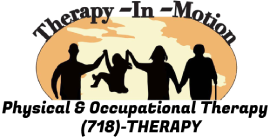
Decompression – Neck and Low Back
By: Dr. Abe Kopolovich, DPT, MBA, JD-IP
Since the days of Ponce De León, people have been searching for the Fountain of Youth, as well as the cure to back pain.

The cost of this pain was made clearer with Newsweek magazine’s article, “The Price of Back Pain,” which stated: “Despite a growing array of sophisticated drugs, diagnostics, physical therapies, and surgical techniques, the millions of Americans battling back pain may not be any closer to getting that quick relief than they were 20 years ago.”
But as the article points out, recent studies show even high-tech medical treatments rarely resolve back problems. The prices charged for them, however, continue to rise.
According to Newsweek, “In 2005 Americans spent $85.9 billion looking for relief from back and neck pain through surgery, doctor’s visits, X-rays, MRI scans, and medications, up from $52.1 billion in 1997.” Yet the number of sufferers increased over the period; in 2005, 15 percent of U.S. adults reported back problems, compared with 12 percent in 1997.
In addition, a JAMA study compared data from 3,179 adult patients who reported spine problems in 1997 to 3,187 who reported them in 2005, and found that annual medical costs rose from $4,700 per person to $6,100, adjusted for inflation. Thus, more people are seeking treatment for back pain, and the price of treatment is also increasing.
In recognition of the impact musculoskeletal disorders have on society, the United Nations and the World Health Organization designated 2000–2010 as the “Bone and Joint Decade.” They cited the 10 million Americans who were currently disabled due to back pain. Those numbers have clearly risen since.
Enter decompression
One solution you can offer patients with low-back pain is spinal decompression. The following discussion will not focus on a specific table, but rather explore the modality itself.
As there are differences among the various decompression machines, the first thing to look for is medical research behind the table you’re evaluating. Ask whether the machine has a fixed tower. How is the software driven? Are they using a logarithmic, sinusoidal, or Intervertebral Differential Dynamics therapy index?
When buying a car, you look for features such as comfort and looks. When buying a computer, you look for memory and speed. With decompression, you should do similar research to find machines that offer superior results.
Surprisingly, chiropractors did not invent decompression. It was developed by Allan Dyer, MD, a former Minister of Health from Ontario, Canada, who was already recognized as a pioneer in the development of the external cardiac defibrillator. He invented a treatment table for low-back disc problems that proved to be a revolutionary improvement in the treatment of low-back pain.
This new table was not available in the U.S. until the mid-1990s, when it gained FDA clearance. Dyer’s work and research were later updated by Harvard professor and neurosurgeon Norman Shealy, MD, the father of the TENS unit.
Demonstrated efficacy
Dennis McClure, MD, a neurosurgeon who conducted a study that tested over 500 surgical candidates, found spinal decompression had a success rate between 86 and 92 percent a year post-treatment.
There have been numerous other studies done on spinal decompression. One of the first and largest was based on the data compiled by Gose, Naguszewski, and Naguszewski, and published in 1998 in Neurological Research. In this study, data was collected from 22 medical centers on patients who received vertebral decompression therapy for low-back pain, and examined a total of 778 cases. Patients offered quantitative assessments of their own pain, mobility, and ability to carry out activities of daily living.
Decompression was successful in 71 percent of the 778 cases, “when success was defined as a reduction in pain to 0 or 1, on a 0 to 5 scale.” Shealy reported the following in the American Journal of Pain Management in April 1997, following a study comparing 14 patients who underwent traditional mechanical traction with 25 patients given spinal decompression: “The decompression system gave ‘good’ to ‘excellent’ relief in 86 percent of patients with ruptured intervertebral discs and 75 percent of those with facet arthroses.”
Furthermore, the researchers found that the computerized decompression table produced “consistent, reproducible, and measurable non- surgical decompression, demonstrated by radiology.”
Avoiding surgery
Dentistry is a good example of an industry changed by time and technology. ”Tooth pullers” became dentists when extraction wasn’t the only way to approach the cause of dental pathology. Both dentistry and spinal manipulation treat bone pathology, and both stress the necessity of prevention. And both started abroad but were popularized and developed further in the U.S.
Today, in most instances, patients no longer have to have their teeth extracted or their back operated on. As the aforementioned Newsweek article reported, “Having an operation to fix a back problem is costly both financially and in recovery time. But the jury is still out as to whether some of these procedures are worth it.” The author cites a study published in JAMA in 2006, which found that herniated disk patients who declined surgery had outcomes after a two- year period on par with those who “went under the knife.”
Michael Haak, MD, a spine specialist and orthopedic surgeon at Northwestern University’s Feinberg School of Medicine, says, “You need to encourage [doctors and patients] to be aware of all the alternatives.” Take the time to read, research, challenge, and acknowledge. To learn, we must be open-minded. Do your homework on spinal decompression, and then make an educated decision.



